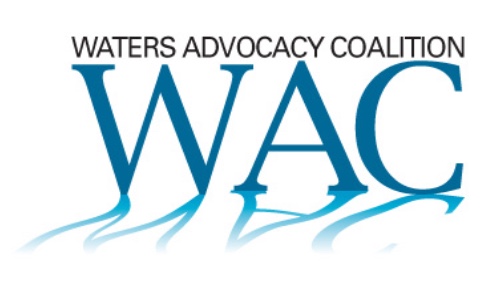The Trump administration has moved to roll back an environmental rule proposed by the Environmental Protection Agency and the U.S. Army Corps of Engineers that defined what bodies of water are subject to federal authority under the Clean Water Act. The rule is known as the “Waters of the United States”(WOTUS) and is intended to help states, companies, and farmers by making it known what waterways are protected under federal law in order to limit pollution in rivers, lakes, streams, and wetlands. Additionally, nearly 117 million Americans get their drinking water from sources that are protected by the rule. But President Trump directed EPA Administrator Scott Pruitt and the U.S. Army Corps of Engineers through an executive order to “review and reconsider” WOTUS. Trump called it a “very destructive and horrible rule.”
Lawsuits
Many polluting industries joined state attorneys general (including Scott Pruitt) in suing the EPA and the Army Corps of Engineers after the rule was released. The utility industry and their trade association, the Edison Electric Institute, sued through their Utility Water Act Group (UWAG) – one of several “U groups” the industry frequently uses in court to prevent air and water regulations. Hunton & Williams represents UWAG in the suit, which the Supreme Court agreed to hear. As the lawsuit proceeded through the courts, EEI continued to lobby EPA and Congress.
Lobbying
In addition to litigation, it was also known that the utility industry and its allies worked to lobby Congress to withdraw WOTUS and set parameters for development of a new rule. For example, EEI and its allies attempted to force President Obama to roll back WOTUS through the government funding bill. In 2015, audio obtained by The Intercept revealed a meeting organized by EEI to strategize on how to insert a rider on the omnibus bill. Participants on the call included representatives from the National Rural Electric Cooperative Association, American Forest and Paper Association, National Association of Home Builders, and American Farm Bureau.
As members of Congress attempted to block Syrian refugee resettlement in the U.S. by attaching a provision in the omnibus bill, industry lobbyists on the EEI call thought that move would allow them the cover to attach their own rider on the bill that withdrew WOTUS. From The Intercept‘s Lee Fang:
“I think that probably helps us,” one participant said, referring to the coming confrontation over refugee policy.
“We’re suddenly not the big issue,” said one call participant. “I mean, this is all going to turn on refugees.”
“I think that helps us,” said another call participant. “I think it helps us with the White House being on defense,” another legislative strategist on the call said.
The final government spending bill did not include WOTUS rollback language.
Financial backing for lawsuits and lobbying
The industry representatives on the 2015 strategy call, including EEI, are all members of the Waters Advocacy Coalition, which is another industry lobbying group devoted to Clean Water Act regulations. The Waters Advocacy Coalition does not have a website, but according to the Center for Responsive Politics, it spent $740,000 lobbying Congress from 2012 through 2016. All of the lobbying expenditures, except $90,000, was expensed by Hunton & Williams. Documentation shows that Hunton & Williams is also legal counsel for the Waters Advocacy Coalition.
The New York Times exposed the Waters Advocacy Coalition as an industry lobbying group in 2011 when Obama’s Council on Environmental Quality (CEQ) was first considering EPA action under the Clean Water Act to clarify jurisdiction. According to NYT reporter John Collins Rudolf, the Waters Advocacy Coalition had a website titled, “protectmywater.org” that featured a banner reading “Protect the Clean Water Act” with photos of streams and clear mountain lakes. The social media platform bios for the group said, “Our coalition is made up of diverse organizations that have an interest in and actively protect our nation’s waters and wetlands resources.” The website no longer exists, but archive snapshots show what NYT described.
In an SNL Energy article about the utility industry’s efforts to prevent the Clean Power Plan through litigation, documents in the article that revealed EEI’s budget of $7.6 million for the Utility Air Regulatory Group in 2016 also revealed that EEI budgeted $280,000 for the Water Advocacy Coalition.
Similar documents filed by Nevada Power Company (NV Energy) during their general rate case proceeding include EEI’s 2013 statement of expenses. That budget shows $122,000 for the Water Advocacy Coalition along with $8.3 million for Hunton & Williams.
The EEI documents that NV Energy attached in their rate case proposal also show that the trade association told its members in its “2013 Results in Review” that it “led industry efforts on other key environmental issues, including Clean Water Act jurisdiction” and “through its leadership in the Waters Advocacy Coalition, EEI continues to educate Congress and key Administration officials about proposals to expand Clean Water Act jurisdiction.”
Customers on the hook for these expenses
In additional to the funding for the Water Advocacy Coalition, EEI and its members have also been funding lawyers representing the Utility Water Act Group. EEI has paid about $40 million between 2012 and 2016 to Hunton & Williams likely for many lobbying and litigation activities. These expenses beg the question of whether or not ratepayers across the country have contributed to these expenses.
Dominion’s rate case in Virginia and Allete’s rate case in Minnesota show that the utility companies proposed their UWAG payments be expensed by customers. Dominion’s filing shows that their dues go straight to Hunton & Williams.
Dominion, Allete, and NV Energy’s rate case filings also include requests for EEI dues to be expensed by their customers.
